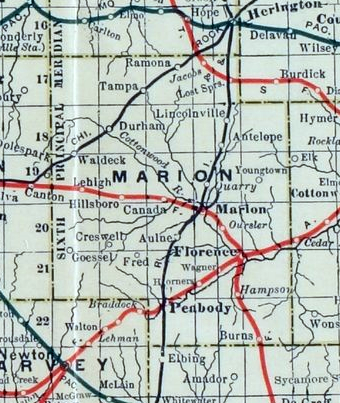|
Superior, Nebraska
Superior is a city in Nuckolls County, Nebraska, United States. As of the 2010 census, the city population was 1,957. Superior bills itself as the "Victorian Capital of Nebraska", and holds an annual Victorian Festival."About Our Town". Superior, Nebraska website. Retrieved 2010-07-04. The downtown area is listed in the ; along with many of the older houses in the city, it has been maintained or restored to its Victorian appearance. History 19th century Sup ...[...More Info...] [...Related Items...] OR: [Wikipedia] [Google] [Baidu] |
|
 |
City
A city is a human settlement of notable size.Goodall, B. (1987) ''The Penguin Dictionary of Human Geography''. London: Penguin.Kuper, A. and Kuper, J., eds (1996) ''The Social Science Encyclopedia''. 2nd edition. London: Routledge. It can be defined as a permanent and densely settled place with administratively defined boundaries whose members work primarily on non-agricultural tasks. Cities generally have extensive systems for housing, transportation, sanitation, utilities, land use, production of goods, and communication. Their density facilitates interaction between people, government organisations and businesses, sometimes benefiting different parties in the process, such as improving efficiency of goods and service distribution. Historically, city-dwellers have been a small proportion of humanity overall, but following two centuries of unprecedented and rapid urbanization, more than half of the world population now lives in cities, which has had profound consequ ... [...More Info...] [...Related Items...] OR: [Wikipedia] [Google] [Baidu] |
|
2010 United States Census
The United States census of 2010 was the twenty-third United States national census. National Census Day, the reference day used for the census, was April 1, 2010. The census was taken via mail-in citizen self-reporting, with enumerators serving to spot-check randomly selected neighborhoods and communities. As part of a drive to increase the count's accuracy, 635,000 temporary enumerators were hired. The population of the United States was counted as 308,745,538, a 9.7% increase from the 2000 census. This was the first census in which all states recorded a population of over half a million people as well as the first in which all 100 largest cities recorded populations of over 200,000. Introduction As required by the United States Constitution, the U.S. census has been conducted every 10 years since 1790. The 2000 U.S. census was the previous census completed. Participation in the U.S. census is required by law of persons living in the United States in Title 13 of the United ... [...More Info...] [...Related Items...] OR: [Wikipedia] [Google] [Baidu] |
|
 |
Grain Elevator
A grain elevator is a facility designed to stockpile or store grain. In the grain trade, the term "grain elevator" also describes a tower containing a bucket elevator or a pneumatic conveyor, which scoops up grain from a lower level and deposits it in a silo or other storage facility. In most cases, the term "grain elevator" also describes the entire elevator complex, including receiving and testing offices, weighbridges, and storage facilities. It may also mean organizations that operate or control several individual elevators, in different locations. In Australia, the term describes only the lifting mechanism. Before the advent of the grain elevator, grain was usually handled in bags rather than in bulk (large quantities of loose grain). Dart's Elevator was a major innovation. It was invented by Joseph Dart, a merchant, and Robert Dunbar, an engineer, in 1842 and 1843, in Buffalo, New York. Using the steam-powered flour mills of Oliver Evans as their model, they invented t ... [...More Info...] [...Related Items...] OR: [Wikipedia] [Google] [Baidu] |
 |
Jim Kaat
James Lee Kaat (; born November 7, 1938) is an American former professional baseball player and television sports commentator. He played in Major League Baseball (MLB) as a left-handed pitcher for the Washington Senators / Minnesota Twins (–), Chicago White Sox (–), Philadelphia Phillies (–), New York Yankees (–), and St. Louis Cardinals (–). His 25-year playing career spanned four decades. Kaat was an All-Star for three seasons and a Gold Glove winner for 16 seasons. He was the American League (AL) leader in shutouts (5) in 1962, and the AL leader in wins (25) and complete games (19) in 1966. In addition to his 283 career wins, he has three 20-win seasons. Kaat won 190 games with the Senators/Twins (winning all but one with the latter), second most in club history and most since the team moved to Minnesota; he also has the most Gold Glove Awards of any Twin with 12. After a brief stint as a pitching coach for the Cincinnati Reds, he went on to become a sportscaster ... [...More Info...] [...Related Items...] OR: [Wikipedia] [Google] [Baidu] |
|
Nebraska State League
The Nebraska State League (NSL) was an American professional minor league baseball league with five incarnations between 1892 and 1959. The Nebraska State League formed five times: in 1892, from 1910 to 1915, from 1922 to 1923, from 1928 to 1938 and from 1956 to 1959. League teams were based in Iowa, Kansas, Nebraska and South Dakota. The 1892 league was a Class B level league, and the league was a Class D level league in all subsequent seasons. History Early seasons The charter 1892 teams were the Beatrice Indians, Fremont, Grand Island Sugar Citys, Hastings, Lincoln Giants/Kearney and Plattsmouth. The league played just one season as a Class B level league before disbanding. In 1889, a touring African-American baseball team called the "Lafayettes" was formed in Nebraska. In 1890, William Pope formed the Lincoln Giants. Pope had signed the best of the Lafayette players and the team subsequently folded. In 1892, the Lincoln Giants sought to join the Nebraska State League. Th ... [...More Info...] [...Related Items...] OR: [Wikipedia] [Google] [Baidu] |
|
 |
Superior Senators
The Superior Senators were a Minor League Baseball team, based in Superior, Nebraska. The Senators played from 1956 to 1958 in the short-season Class D level Nebraska State League as an affiliate of the Washington Senators. From 1910 to 1914, the Senators were preceded in Nebraska State League play by the Superior Brickmakers. Baseball Hall of Fame member Dazzy Vance played for the 1913 Brickmakers History Affiliated with the Washington Senators of the American League, the Superior Senators were a charter team in the newly resurrected Nebraska State League, which had been dormant for 18 years. The After the 1958 season, the league reduced its membership from eight to six teams as the Senators and Lexington Red Sox were disbanded. The Nebraska State League itself disbanded after the 1959 season. With a city population of 3,000, the Superior Senators played in, by far, the smallest city in the eight team Nebraska State league. The season ticket sales for the Superior Senators ... [...More Info...] [...Related Items...] OR: [Wikipedia] [Google] [Baidu] |
 |
BNSF Railway
BNSF Railway is one of the largest freight railroads in North America. One of seven North American Class I railroads, BNSF has 35,000 employees, of track in 28 states, and nearly 8,000 locomotives. It has three transcontinental routes that provide rail connections between the western and eastern United States. BNSF trains traveled over in 2010, more than any other North American railroad. The BNSF Railway Company is the principal operating subsidiary of parent company Burlington Northern Santa Fe, LLC. Headquartered in Fort Worth, Texas, the railroad's parent company is a wholly owned subsidiary of Berkshire Hathaway, Inc., of Omaha, Nebraska. The current CEO is Kathryn Farmer. According to corporate press releases, the BNSF Railway is among the top transporters of intermodal freight in North America. It also hauls bulk cargo, including enough coal to generate around 25% of the electricity produced in the United States. The creation of BNSF started with the formati ... [...More Info...] [...Related Items...] OR: [Wikipedia] [Google] [Baidu] |
.jpg) |
Burlington Northern Railroad
The Burlington Northern Railroad was a United States-based railroad company formed from a merger of four major U.S. railroads. Burlington Northern operated between 1970 and 1996. Its historical lineage begins in the earliest days of railroading with the chartering in 1848 of the Chicago and Aurora Railroad, a direct ancestor line of the Chicago, Burlington and Quincy Railroad, which lends Burlington to the names of various merger-produced successors. Burlington Northern acquired the Atchison, Topeka and Santa Fe Railway on December 31, 1996, to form the Burlington Northern and Santa Fe Railway (later renamed BNSF Railway), which was owned by the Burlington Northern Santa Fe Corporation. That corporation was purchased by Berkshire Hathaway in 2009 which is controlled by investor Warren Buffett. History The Burlington Northern Railroad was the product of the merger of four major railroads: the Great Northern Railway, the Northern Pacific Railway, the Spokane, Portland and Sea ... [...More Info...] [...Related Items...] OR: [Wikipedia] [Google] [Baidu] |
 |
Lost Springs, Kansas
Lost Springs is a city in Marion County, Kansas, United States. It was named for the old lost spring near the city. As of the 2020 census, the population of the city was 55. It is located south of Herington, about 0.6 miles west of the intersection of U.S. Route 77 (aka U.S. Route 56) highway and 340th Street next to the Union Pacific Railroad. History Early history For many millennia, the Great Plains of North America was inhabited by nomadic Native Americans. From the 16th century to 18th century, the Kingdom of France claimed ownership of large parts of North America. In 1762, after the French and Indian War, France secretly ceded New France to Spain, per the Treaty of Fontainebleau. 19th century In 1802, Spain returned most of the land to France. In 1803, most of the land for modern day Kansas was acquired by the United States from France as part of the 828,000 square mile Louisiana Purchase for 2.83 cents per acre. From the 1820s to the 1870s, one of ... [...More Info...] [...Related Items...] OR: [Wikipedia] [Google] [Baidu] |
 |
Strong City, Kansas
Strong City is a city in Chase County, Kansas, Chase County, Kansas, United States. Originally known as Cottonwood Station, in 1881 it was renamed Strong City after William Barstow Strong, then vice-president and general manager, and later president of the Atchison, Topeka and Santa Fe Railway. As of the 2020 United States census, 2020 census, the population of the city was 386. It is located along U.S. Route 50 (Kansas), U.S. Route 50 highway. History Early history For many millennia, the Great Plains of North America was inhabited by nomadic Native Americans in the United States, Native Americans. From the 16th century to 18th century, the Kingdom of France claimed ownership of large parts of North America. In 1762, after the French and Indian War, France secretly ceded New France to Spain, per the Treaty of Fontainebleau (1762), Treaty of Fontainebleau. 19th century In 1802, Spain returned most of the land to France. In 1803, most of the land for History of Kansas ... [...More Info...] [...Related Items...] OR: [Wikipedia] [Google] [Baidu] |
 |
Atchison, Topeka And Santa Fe Railway
The Atchison, Topeka and Santa Fe Railway , often referred to as the Santa Fe or AT&SF, was one of the larger railroads in the United States. The railroad was chartered in February 1859 to serve the cities of Atchison and Topeka, Kansas, and Santa Fe, New Mexico. The railroad reached the Kansas–Colorado border in 1873 and Pueblo, Colorado, in 1876. To create a demand for its services, the railroad set up real estate offices and sold farmland from the land grants that it was awarded by Congress. Despite being chartered to serve the city, the railroad chose to bypass Santa Fe, due to the engineering challenges of the mountainous terrain. Eventually a branch line from Lamy, New Mexico, brought the Santa Fe railroad to its namesake city. The Santa Fe was a pioneer in intermodal freight transport; at various times, it operated an airline, the short-lived Santa Fe Skyway, and the fleet of Santa Fe Railroad Tugboats. Its bus line extended passenger transportation to areas not ... [...More Info...] [...Related Items...] OR: [Wikipedia] [Google] [Baidu] |